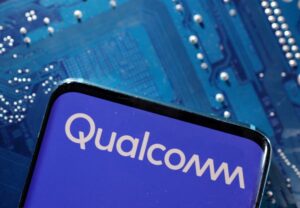D-Wave Quantum’s Innovative Advancements in Drug Discovery

Understanding the Current AI Landscape: China vs. the U.S.
Overview of Recent Developments
In a rapidly evolving tech world, the competition between China and the United States in artificial intelligence (AI) is intensifying. Recent reports highlight how Chinese companies are adapting their strategies to surpass U.S. dominance in this important sector. While the U.S. government is focusing on regulatory frameworks to control AI access, China is opting for an approach that embraces open-source models to encourage AI innovation and broader market adoption.
China’s Strategy in AI Innovation
The Rise of Open-Source AI
A notable example of this shift is the unveiling of new AI models by DeepSeek, a Chinese startup that provides cost-effective alternatives to established U.S. technologies. By offering open-source AI models, DeepSeek is challenging the status quo and enabling an environment for accelerated innovation, as highlighted by Wei Sun, an analyst from Counterpoint Research.
The decision for open-sourcing these models comes at a crucial time. The AI software market in China is anticipated to grow at a compound annual growth rate (CAGR) of 35.52% and could reach a staggering $223.35 billion by 2028, according to Research and Markets.
Addressing Market Needs
Recognizing the time it may take to match American technology in advanced AI, Chinese firms are concentrating on producing efficient and low-cost AI solutions. This focus not only targets domestic markets but also aims to provide affordable AI technology to countries that may be dissatisfied with U.S. policies. China’s strategy emphasizes expanding access to AI technology in developing markets, making it challenging for competitors to disrupt this integration.
The Impact of Open-Source Models
Following the launch of DeepSeek’s models, numerous other Chinese companies have started to release their own open-source AI models freely available to individual users. This trend indicates a significant shift away from proprietary licensing, as these companies now provide the underlying source code for public modification and redistribution.
In contrast, while U.S. tech giants typically advocate for open-source practices, they sometimes place limitations on how their code can be utilized, favoring business models that profit from access fees.
D-Wave Quantum Inc.: An American Perspective
Company Profile
On the U.S. side, D-Wave Quantum Inc. (NYSE: QBTS) is notable for its advancements in quantum computing applications within AI. The company recently made headlines by completing a groundbreaking AI drug discovery project in collaboration with Japan Tobacco’s pharmaceutical division. Their approach integrates quantum computing with AI to expedite and enhance drug discovery processes.
Innovative Solutions for Industry Challenges
D-Wave’s CEO, Dr. Alan Baratz, underscores the challenges faced by traditional AI due to rising power demands. He explains that combining AI with quantum computing has the potential to create energy-efficient, scalable solutions that might overcome these obstacles while enhancing AI capabilities.
This initiative illustrates how U.S. firms like D-Wave are looking to harness cutting-edge technologies to compete effectively in the global landscape.
Investment Insights and Market Analysis
D-Wave Quantum Inc. currently ranks 11th on various Wall Street AI news updates. Although it has potential as an investment, many analysts believe that AI-related stocks may yield even higher returns in the near term. An exciting opportunity lies in identifying AI stocks available at a low valuation, estimated at less than five times earnings.
Moreover, it has been reported that certain promising AI stocks have shown significant gains in early 2025, while other established AI names have experienced noticeable declines.
Looking Forward
As these dynamics unfold, the competition in the AI sector will likely continue intensifying. Both Chinese advancements and U.S. innovations like those from D-Wave reflect the broader technological shift toward AI. Stakeholders from both regions are eagerly adapting to these changes, indicating a vibrant and competitive future for AI development and investment.






